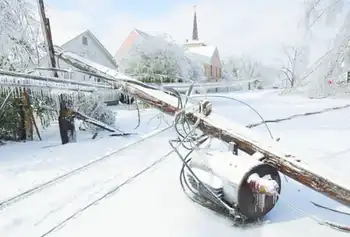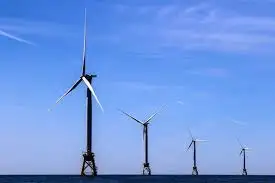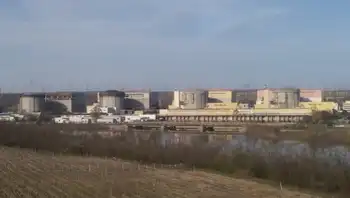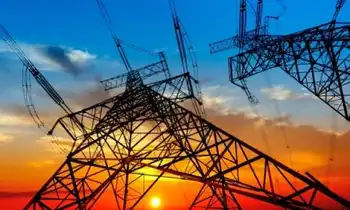Stimulus funds targeted for Vermont renewable program
This money will added to $7 million dollars of State funds available to the Clean Energy Development Fund (CEDF) to provide grants and loans for renewable energy projects such as solar photovoltaic, wind turbines, methane digesters (cow power), and other biomass.
Estimates are that this money will encourage $150,000,000 of total expenditure on renewable energy projects which will produce 3 million megawatt hours of electricity in the next twenty years at rates comparable to todayÂ’s cost of power generated from natural gas. Using renewables instead of natural gas to generate this electricity will prevent the release of an estimated 860 million pounds of CO2.
“Projects funded from the Clean Energy Development Fund have demonstrated how state investments can be used to jump start the renewable energy industry and produce power at prices consumers can afford,” said Governor Douglas. “With these additional funds, we will be able to nearly triple our existing program. These funds will give us the ability to help larger projects and more projects with a combination of grants and loans. During this difficult economic time, we are reducing the price of renewable energy, not raising the prices that consumers and businesses pay for electricity.”
Typically, projects receive grants which cover about 20% of their costs. There is also 2% loan money available. The fund is currently administered by the Public Service Department and an appointed investment committee which recommends projects for funding. Since itÂ’s inception in 2005 the program has distributed $13.2 million in grants and $2.2 million in low interest loans to 84 projects in Vermont, resulting in 9.6 MW of capacity for the state.
Based on data from the most recent round of applications for CEDF funding, wholesale electricity produced from projects that get this initial funding will cost less than $.06 per kilowatt hour after taking into account all credits – almost a 25% reduction in price. This lower price is critical in allowing Vermont utilities to purchase this power without forcing up electric rates.
The Southern Vermont Health & Recreation Center in Springfield, Vermont, was an early adopter of renewable energy, said Edgar May of the Center’s board of directors. “We are now heating three swimming pools with the help of the sun. In little more than two years we have demonstrated that these solar energy investments are no longer in the experimental stage, but have solid payoffs even in a cold climate like ours. We have produced more than 233,000 kilowatt hours of solar energy, reduced global warming and saved more than $30,000 in propane costs.
“Because of our size and hard data like this, we are receiving increasing inquiries and visitors from other parts of the United States and Canada from organizations seeking to build similar projects,” said May. The Center recently received a CEDF award to add a photovoltaic array to expand their renewables efforts.
The Public Service Department (PSD) plans to work with the Investment Oversight Board to solicit applications for funds as soon as possible. Projects will be selected based on their efficiency including whether power is generated during peak or off-peak periods. The intent is to have projects underway during this yearÂ’s construction season. States which spend their stimulus money too slowly risk losing it; Vermont intends to be in a position to claim funds forfeited by other states and expand the program further.
“My team is working hard to ensure that these funds are spent quickly and efficiently so that we can maximize their job creation potential,” Douglas continued. “We are all proud of our ‘greenest state’ ranking and these funds and our increased investment in affordable and clean renewable energy will ensure that Vermont keeps its cherished designation.”
PSD Commissioner David O’Brian said, “These funds will allow us to continue our vital support of the renewable energy industry in Vermont. They will make jobs available to our young people currently being trained in our technical colleges and universities. Perhaps even more important, utilizing the stimulus funds in this way we can foster a clean, renewable environment while retaining competitive electric rates that are so critical for all sectors of our economy. This particular stimulus money is certainly going to spur economic development.”
The State Energy Program money in ARRA is allocated by formula and guaranteed to states which meet the basic program requirements and can spend it quickly enough. However there are also $4.5 billion for Smart Grid projects available nationally in a competitive pool to be awarded by the Department of Energy to projects which best advance Smart Grid goals.
Vermont utilities, the PSD, and Vermont Office of Economic Stimulus and Recovery are working together with help from the State’s congressional delegation to compete for a share of this money. In the future as the electrical grid gets “smarter”, utilities will be able to manage small distributed energy sources much more efficiently. Electricity users will benefit both from diversity of supply and reduced transmission losses when electricity from nearby sources is used.
“This plan to bring more renewable electricity sources online quickly strengthens our hand when we compete nationally for the Smart Grid money, “said Vermont Chief Recovery Officer Tom Evslin. “We are demonstrating the ability to leverage money across the many different programs in the stimulus bill to achieve our priorities for SmartVermont.”
The SmartVermont plan announced by Governor Douglas earlier this year focuses ARRA money on VermontÂ’s priorities of universal broadband, greater energy efficiency including renewables and the Smart Grid, Health Information Technology, e-education, and economic development.
Related News

Canadian Scientists say power utilities need to adapt to climate change
TORONTO - The increasing intensity of storms that lead to massive power outages highlights the need for Canada’s electrical utilities to be more robust and innovative, climate change scientists say.
“We need to plan to be more resilient in the face of the increasing chances of these events occurring,” University of New Brunswick climate change scientist Louise Comeau said in a recent interview.
The East Coast was walloped this week by the third storm in as many days, with high winds toppling trees and even part of a Halifax church steeple. Nova Scotia Power says it has weathered nine storm days so…





